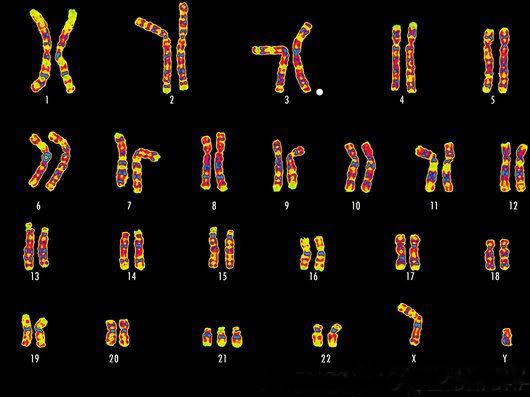"Down syndrome is just Down syndrome, right?"
"Some people have a mild case of it. Like your boy..."
"He doesn't look like he has it... maybe the doctors are wrong"
(Random things people have said to me)
Today's Medical Monday is about the different types of Down syndrome. As it turns out, not all instances of Down syndrome are exactly the same like my one friend there would like to think. As well, there is no such thing as a "mild case"; it is like being pregnant, you either are or you aren't. There are three different types of Down syndrome. In order to explain them properly, I am going to have to explain a few things in technical terms. So buckle up friends, here comes the science...
You have 46 chromosomes (bundles of genes) in each of your cells. Half of these you received from your mother and half from your father. The exception to this are sex or germ cells (the ova or egg in the female and spermatozoa or sperm cells in the male) which only have half that amount (23) as they will hopefully combine with another sex cell and together make up the full amount. Those cells with 46 chromosomes are referred to as diploid cells while those with 23 chromosomes are called haploid cells.
A diploid cell will divide in order to make haploid cells; this is called meiosis. It will first duplicate the genetic material and then sort out which came from where (Mom or Dad). Some genes are swapped around at this stage which increases genetic diversity (Mom's blue eyes go in the Dad pile of genes while Dad's brown eyes go in the Mom pile, that kind of thing). Now that there are two piles of mixed up DNA containing 46 chromosomes each, those two piles will divide into four haploid daughter cells. During this last division, sometimes things do not go smoothly and things are divided unevenly (try ripping a dinner roll evenly in half and see if you do not have a new respect for cellular division). Sometimes one cell goes away with more information or an extra chromosome than the other one. This is called nondisjunction. There are many disorders that are a result of nondisjunction; Down syndrome is just one of them.
Trisomy 21
When one of the cells comes away from meiosis with an extra copy of the 21st chromosome, it is called Trisomy 21. Every cell of the resulting zygote (and eventually, fetus) will have an extra copy of the gene and the results will be the characteristics of Down syndrome. 95% of the time, this is what happens.
This is what Wyatt has.
Translocation
Somewhere around 3-4% of the time, translocation occurs. This is where a piece of a 21st chromosome breaks off during meiosis and attaches itself to another chromosome (usually #14). This extra bit of #21, although attached to #14, causes the characteristics of Down syndrome to occur. When this occurs, one of the parents is usually carrying chromosomes that are arranged unusually.
Mosaicism (or Mosaic Down syndrome)
This happens in 1-2 percent of DS cases. The nondisjunction takes place after fertilization which creates some cells with an extra copy of chromosome 21 and some without. How many cells have 47 chromosomes and how many have the normal 46 will determine how much and where the Down syndrome characteristics will be expressed.
 |
| Karyotype of a male with Trisomy 21 |


You educated me today. You can now consider yourself an educator of very tired brains that are reading your blog posts instead of breaking the fight up that is occurring next to them on the sofa. Truly interesting and informative.
ReplyDeleteI'm glad. :)
ReplyDelete